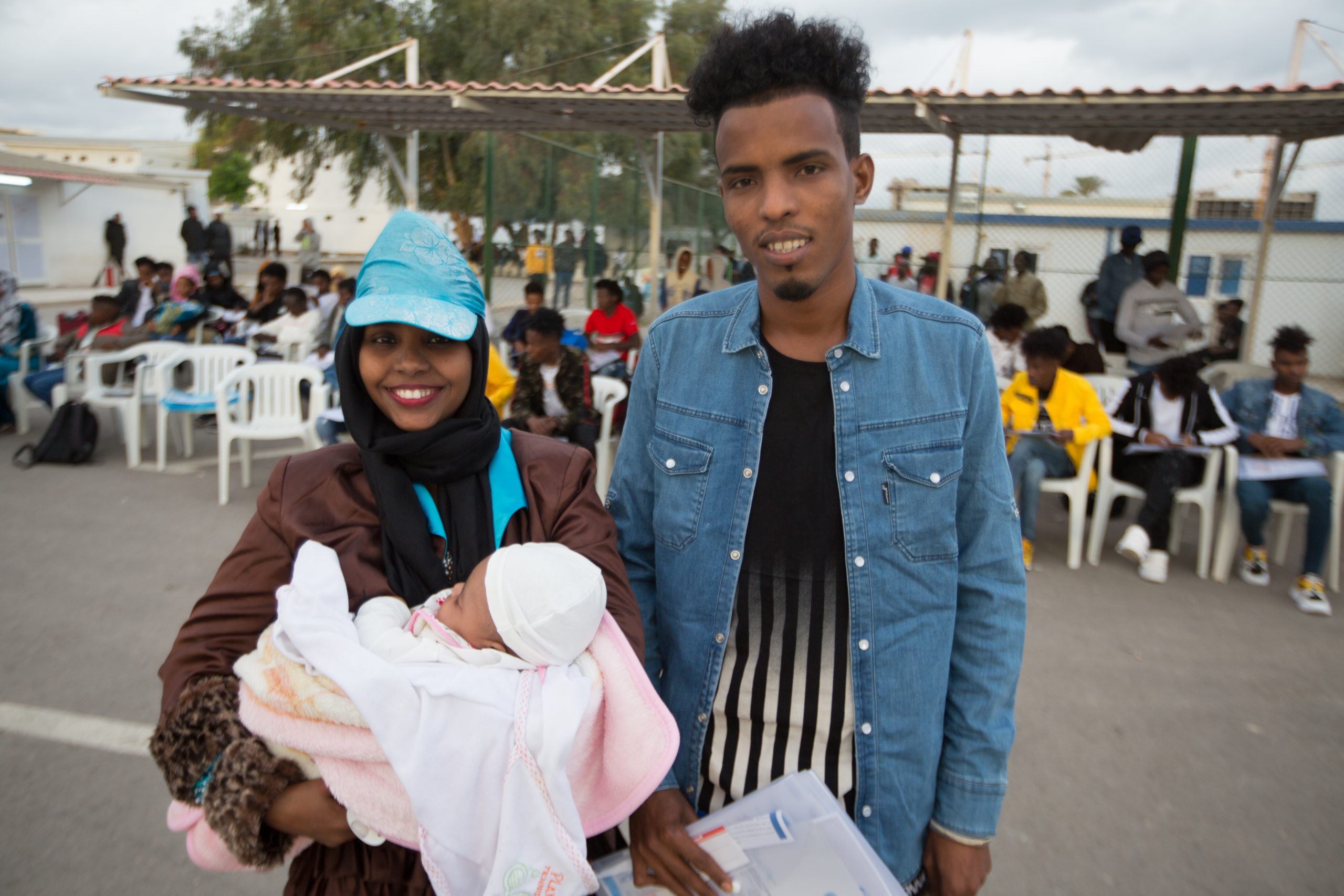Libya in Turmoil
Crisis in Libya: Dying for a chance to live
Photo: ©UNHCR/Hereward Holland
Please help these families with life-saving humanitarian assistance and safer routes to a new life.

Shelter

Essential items

Cash Assistance
What’s happening in Libya?
Libya is one of the most dangerous regions for refugees and migrants in Africa, as it continues to serve as a primary departure point for those attempting to reach Europe in search of safety and better opportunities. Over the past year, more than 100,000 refugees and migrants have entered Libya, fleeing escalating violence, persecution, and conflict from countries such as Sudan, Chad, and sub-Saharan Africa. The situation in Libya has only deteriorated, with increasing numbers of individuals, including children, caught in a web of displacement, abuse, and exploitation. As of 2024, there are over 250,000 refugees and asylum seekers in the country, with 143,000 internally displaced persons (IDPs), many of whom are living in precarious conditions.
The deadly journey across the Mediterranean continues to claim the lives of many, with thousands perishing each year attempting to reach Europe. The Mediterranean remains the deadliest sea crossing in the world for refugees and migrants, with over 1,200 deaths recorded in the first half of 2024 alone. Those who are rescued or intercepted by authorities are often sent back to Libya, where they face further abuse in overcrowded detention centers. UNHCR is in urgent need of support to respond to the ongoing crisis, providing life-saving assistance to refugees, IDPs, and migrants while working to secure safer pathways to protection and resettlement.
It is anticipated that the situation for refugees and asylum-seekers will remain challenging as they continue to be regarded as illegal migrants by Libyan authorities. Since the outbreak of the Sudan conflict in April 2023, the considerable arrival of Sudanese refugees is expected to increase further with up to 149,000 Sudanese refugees in Libya by the end of 2024.
What is UNHCR doing to help?
UNHCR is on the ground providing immediate humanitarian aid to those arriving, departing or living in Libya. This includes core-relief items, shelter, cash and evacuating the most vulnerable refugees from Libya.
UNHCR’s strategy in Libya addresses diverse protection risks and needs of refugees, IDPs, and host communities, aiming for comprehensive solutions.
UNHCR ensures provision of essential protection and assistance services to alleviate suffering, protect from deportation and advocate for alternatives to detention, and facilitate access to durable solutions out of Libya for some of the individuals with heightened protection risks.
Are there any routes to safety?
For those attempting the perilous journey to Europe, there are few, if any, safe routes. The dangers are overwhelming. Refugees and migrants attempting to cross the Mediterranean face the risk of drowning, trafficking, and being turned back at sea. More than 1,200 people have died or gone missing trying to cross the Mediterranean in 2024 alone. Even those who manage to land in Europe often face deportation back to Libya, where they may be subjected to indefinite detention, exploitation, and severe abuse. Many of these people are sent to detention centers where they endure overcrowding, starvation, physical abuse, and in some cases, forced labor or sexual violence.
The route from Libya to Europe has become increasingly hazardous, and those who survive the journey often arrive in Europe with physical and psychological scars. For the most vulnerable, including children and survivors of sexual violence, life in Libya can be a never-ending cycle of fear and uncertainty. UNHCR, along with other humanitarian organizations, continues to work to provide assistance to those in need and advocate for safer alternatives. But the situation is dire, and the risks are ever-present. As of 2024, there are more than 900,000 migrants and refugees in Libya, many of whom are trapped, unable to move forward or return to safety.
How can I help people in Libya?
The easiest way to give is through our secure online donation form. You can give monthly or one-time on behalf of an individual or a corporation. Your donation will help refugees and internally displaced people who need it most – our donors make our work possible. All contributions to the UNHCR are 100% tax-deductible.
Where can I access the latest data and reports?
Libya Operations —UNHCR’s relief work to protect displaced people inside Libya.
Did you know that on average, one person died for every six people who have arrived in Europe from Libya last year, despite a decrease in arrivals overall?

Preparing for evacuation to Rwanda.
Twenty-year-old Somali refugee Delmar and his wife are ready to leave the Gathering and Departure Facility in Tripoli with their newborn baby Naseem, to start afresh.
Delmar fled Somalia in 2015 after witnessing the death of his father and older brother at the hands of Al Shabab. To reach Libya he travelled through war-torn Yemen, then Sudan, and on arrival he was kidnapped and held in a warehouse in Bani Walid. Kidnappers demanded money and threatened him with torture, beatings and starvation.
With the help of friends and family back home, he managed to collect some money to buy his freedom. During this time, he met his wife and was also able to ensure her release from the traffickers. They decided to cross the Mediterranean to Europe, but their boat was intercepted and they ended up in a detention centre run by Libyan authorities for months until UNHCR advocated for their release.
Photo: ©UNHCR/ Mohamed Alalem
Donate Today
Please help refugee and internally displaced families in Libya.
Donate Today
Please help refugee and internally displaced families in Libya.


